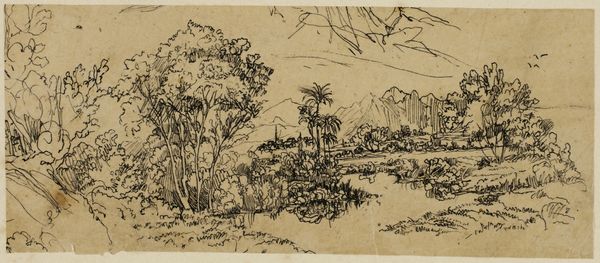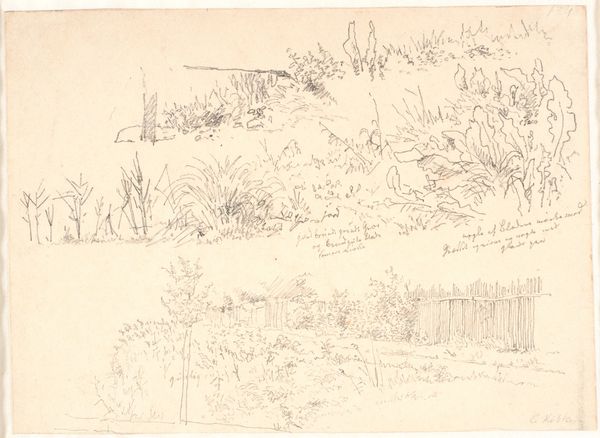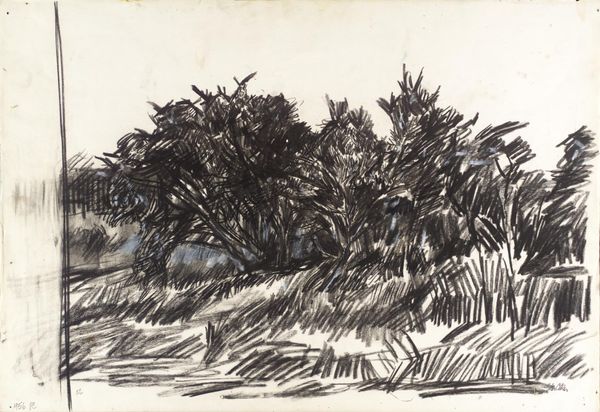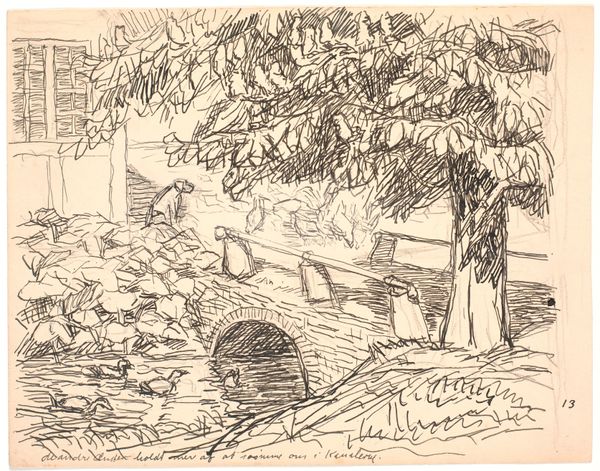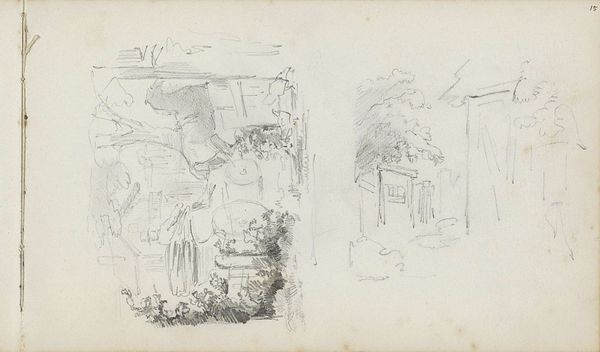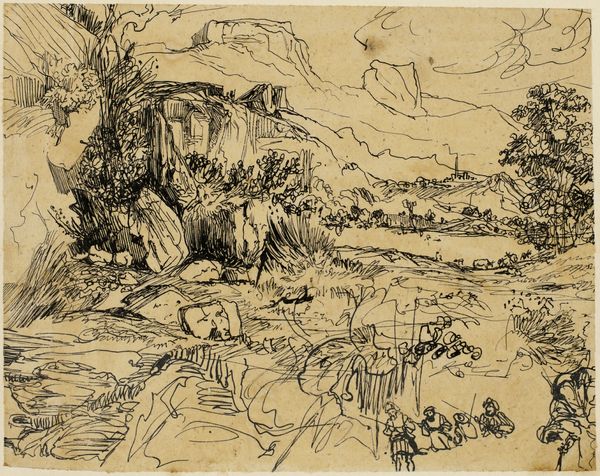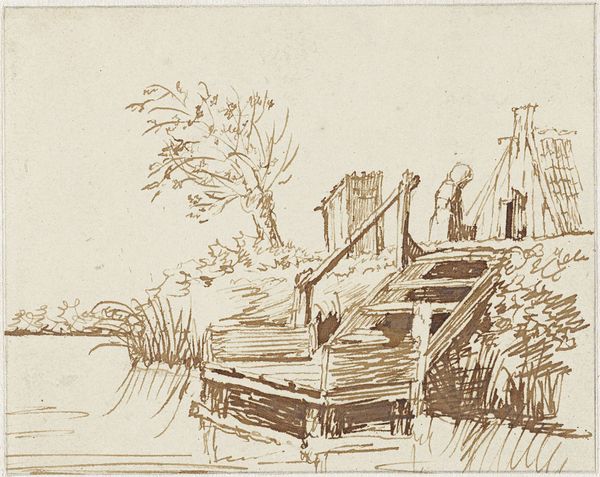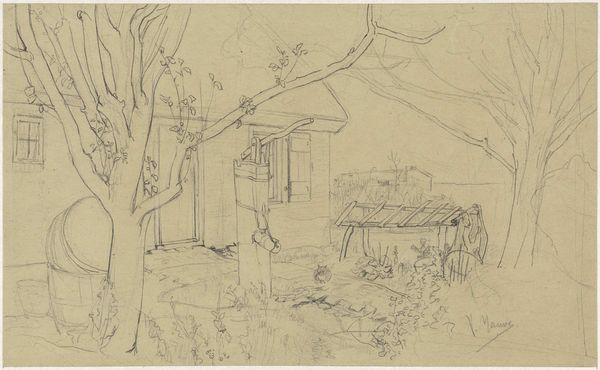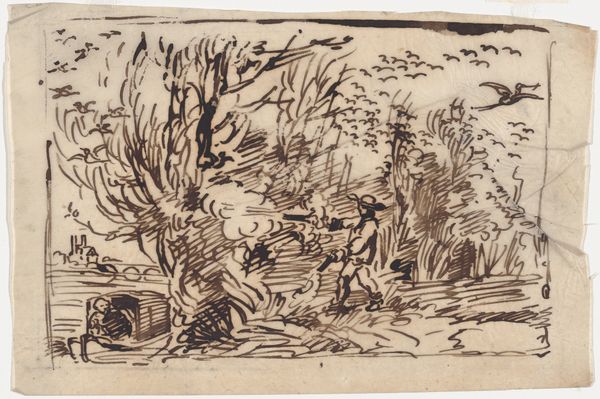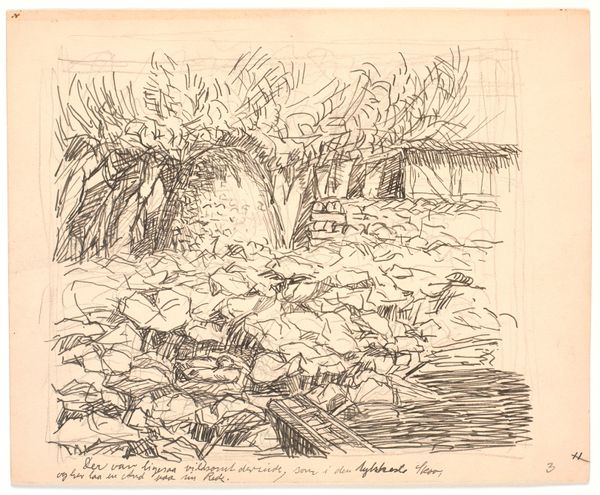
drawing, print, paper, ink, pen
#
drawing
#
ink drawing
#
pen drawing
# print
#
pen sketch
#
landscape
#
paper
#
ink
#
line
#
pen
Dimensions: 99 × 147 mm
Copyright: Public Domain
Editor: So this is "African Village," a pen and ink drawing by Rodolphe Bresdin, sometime in the mid-19th century. It's a chaotic scene, full of dense, swirling lines. What I find most striking is the lack of clear definition; it’s almost dreamlike. How do you interpret this work? Curator: The swirling lines you mention, that very lack of definition, it speaks volumes. It's not just a village scene; it’s a remembered, perhaps even a reconstructed, village. Notice how Bresdin uses repeated motifs – the curving lines of foliage, the sharp angles of the buildings. Are they literal representations or something else? Editor: What do you mean "something else?" Curator: Consider the period. France’s colonial ambitions were at their peak. This image, produced by someone who never even visited Africa, embodies both fascination and a degree of appropriation. The visual shorthand here isn't necessarily about geographical accuracy. Editor: So it’s more about the *idea* of Africa, the French perception? Curator: Precisely. These quickly sketched lines, do they evoke for you a feeling of exoticism? Editor: I see what you mean. Now that you point it out, the vegetation seems almost exaggerated. Like a stage set. Curator: That exaggeration is key. Bresdin, whether consciously or not, translates the “otherness” of Africa through established European visual tropes. These recurring stylized palms become more than just plants. Editor: It’s a way of controlling the unknown. Curator: Exactly! It’s like mapping a cultural landscape using symbols that the European audience would understand. That's an astute way of putting it. We understand it may have been a sort of "drawing" of what Europeans saw, expected, and assumed about an entire people and place.
Comments
No comments
Be the first to comment and join the conversation on the ultimate creative platform.
